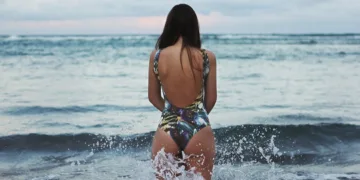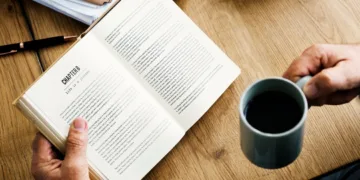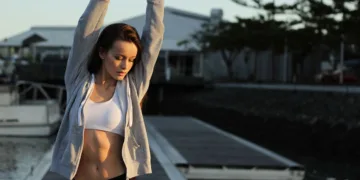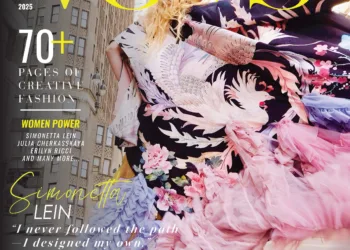Table of Contents
- Introduction
- Exploring the Iconic Costumes of Cecil Beaton in My Fair Lady
- How Cecil Beaton’s Set Design Elevated My Fair Lady
- Examining the Cinematography of My Fair Lady Through Cecil Beaton’s Lens
- The Impact of Cecil Beaton’s Art Direction on My Fair Lady
- Revisiting the Legacy of Cecil Beaton’s Work on My Fair Lady
- Conclusion
«Capture the Charm of Old-World Elegance with Cecil Beaton’s My Fair Lady!»
Introduction
Cecil Beaton was an English photographer, designer, diarist, and Academy Award-winning stage and costume designer. He is best known for his iconic photographs of celebrities and royalty, as well as his costume and set designs for the 1964 musical film My Fair Lady. Beaton’s work was highly influential in the world of fashion and photography, and he was a major contributor to the world of theater and film. His work on My Fair Lady earned him an Academy Award for Best Art Direction and a nomination for Best Costume Design. Beaton’s work has been celebrated for its elegance and sophistication, and his influence on the world of fashion and photography is still felt today.
Exploring the Iconic Costumes of Cecil Beaton in My Fair Lady
The iconic costumes of Cecil Beaton in the 1964 musical film My Fair Lady are some of the most recognizable and beloved costumes in cinematic history. Beaton, a renowned British costume and set designer, was tasked with creating the costumes for the film adaptation of the musical, which was based on George Bernard Shaw’s play Pygmalion. Beaton’s costumes for the film were a perfect blend of Edwardian elegance and modern style, and they remain some of the most iconic costumes in film history.
Beaton’s costumes for the film were inspired by the Edwardian era, which was a period of time in the early 20th century when fashion was characterized by a focus on luxury and elegance. Beaton’s costumes for the film featured a variety of fabrics, including velvet, silk, and lace, and he used a variety of colors, including pastels and jewel tones. He also used a variety of embellishments, such as feathers, ribbons, and bows, to add texture and interest to the costumes.
Beaton’s costumes for the film also featured a variety of silhouettes, including long, flowing skirts and fitted bodices. He also used a variety of accessories, such as hats, gloves, and jewelry, to complete the look. Beaton’s costumes for the film were also notable for their attention to detail, as he used a variety of techniques, such as embroidery and beading, to create intricate designs.
Beaton’s costumes for the film were also notable for their ability to capture the essence of the characters. For example, the costumes for Eliza Doolittle, the main character of the film, were designed to reflect her transformation from a poor flower girl to a sophisticated lady. Beaton’s costumes for the other characters in the film were also designed to reflect their personalities and social status.
The iconic costumes of Cecil Beaton in My Fair Lady remain some of the most beloved costumes in cinematic history. Beaton’s costumes for the film were a perfect blend of Edwardian elegance and modern style, and they remain some of the most iconic costumes in film history. Beaton’s costumes for the film were also notable for their attention to detail and their ability to capture the essence of the characters.
How Cecil Beaton’s Set Design Elevated My Fair Lady
Cecil Beaton’s set design for the 1964 film adaptation of My Fair Lady was a major factor in the film’s success. Beaton, a renowned photographer and costume designer, was tasked with creating a set that would bring the world of George Bernard Shaw’s play to life. Beaton’s design was a masterful blend of realism and fantasy, creating a world that was both believable and visually stunning.
Beaton’s set design was heavily influenced by the architecture of the Victorian era. He used a combination of real and artificial elements to create a world that was both familiar and fantastical. The sets were filled with intricate details, from the ornate furniture to the lush gardens. Beaton also used a variety of colors and textures to create a sense of depth and atmosphere.
Beaton’s set design was also used to great effect in the film’s musical numbers. He used a combination of lighting, props, and costumes to create a sense of movement and energy. The sets were also used to create a sense of grandeur and spectacle, making the musical numbers even more memorable.
Beaton’s set design was also used to great effect in the film’s dramatic scenes. He used a combination of lighting, props, and costumes to create a sense of tension and emotion. The sets were also used to create a sense of intimacy, allowing the audience to feel as if they were part of the story.
Overall, Cecil Beaton’s set design was a major factor in the success of My Fair Lady. His design was a masterful blend of realism and fantasy, creating a world that was both believable and visually stunning. His use of lighting, props, and costumes was also used to great effect, creating a sense of grandeur and intimacy. Beaton’s set design elevated the film to a new level, making it one of the most beloved musicals of all time.
Examining the Cinematography of My Fair Lady Through Cecil Beaton’s Lens
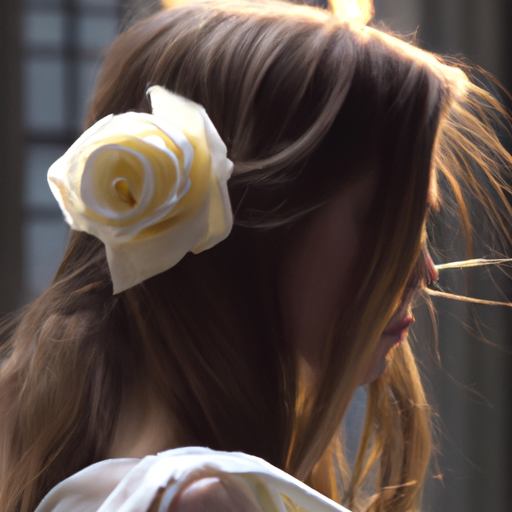
Cecil Beaton’s cinematography in the 1964 musical film My Fair Lady is a masterful display of artistry and technical skill. Beaton’s work on the film earned him an Academy Award for Best Art Direction and Costume Design, and his cinematography has been praised for its beauty and elegance. Beaton’s use of light, color, and composition creates a visual feast that captures the essence of the story and its characters.
Beaton’s use of light is particularly striking. He often uses light to create a sense of atmosphere and emotion, such as in the scene where Eliza Doolittle (Audrey Hepburn) is singing in the rain. Beaton uses a soft, diffused light to create a dreamy, romantic atmosphere. He also uses light to create a sense of contrast, such as in the scene where Eliza is singing in the Ascot Racecourse. Here, Beaton uses bright, harsh lighting to create a stark contrast between the bright, vibrant colors of the racecourse and the dark, somber mood of the scene.
Beaton’s use of color is also noteworthy. He often uses vibrant, saturated colors to create a sense of energy and excitement, such as in the scene where Eliza is singing in the Ascot Racecourse. Here, Beaton uses bright, vibrant colors to create a sense of energy and excitement. He also uses muted, pastel colors to create a sense of calm and tranquility, such as in the scene where Eliza is singing in the rain. Here, Beaton uses soft, muted colors to create a peaceful, dreamy atmosphere.
Finally, Beaton’s use of composition is also noteworthy. He often uses wide shots to capture the grandeur of the settings, such as in the scene where Eliza is singing in the Ascot Racecourse. Here, Beaton uses a wide shot to capture the grandeur of the racecourse and the energy of the crowd. He also uses close-ups to capture the emotion of the characters, such as in the scene where Eliza is singing in the rain. Here, Beaton uses a close-up to capture the emotion of Eliza’s performance.
In conclusion, Cecil Beaton’s cinematography in My Fair Lady is a masterful display of artistry and technical skill. His use of light, color, and composition creates a visual feast that captures the essence of the story and its characters. Beaton’s work on the film earned him an Academy Award for Best Art Direction and Costume Design, and his cinematography has been praised for its beauty and elegance.
The Impact of Cecil Beaton’s Art Direction on My Fair Lady
Cecil Beaton was an iconic British photographer, artist, and designer who is best known for his art direction in the 1964 musical film My Fair Lady. Beaton’s art direction was instrumental in creating the film’s unique visual style, which has become iconic in its own right.
Beaton’s art direction was heavily influenced by the Edwardian era, which was the period of time in which the original play was set. He used a combination of period-accurate costumes, sets, and props to create a world that was both visually stunning and historically accurate. Beaton also used a variety of techniques to create a sense of depth and movement in the film, such as the use of long shots and tracking shots.
Beaton’s art direction also had a major impact on the film’s overall aesthetic. He used a variety of colors and textures to create a vibrant and visually appealing world. He also used a variety of lighting techniques to create a sense of atmosphere and mood.
Beaton’s art direction was also influential in creating the film’s memorable characters. He used a combination of costume design, makeup, and hairstyling to create characters that were both visually striking and believable. He also used a variety of camera angles and shots to create a sense of intimacy between the characters and the audience.
Overall, Cecil Beaton’s art direction was instrumental in creating the unique visual style of My Fair Lady. His use of period-accurate costumes, sets, and props, combined with his use of color, texture, and lighting, created a visually stunning and historically accurate world. His use of camera angles and shots also created a sense of intimacy between the characters and the audience. As a result, Beaton’s art direction has become iconic in its own right and has had a lasting impact on the film industry.
Revisiting the Legacy of Cecil Beaton’s Work on My Fair Lady
Cecil Beaton was a renowned British photographer, designer, and artist who is best known for his work on the 1964 musical film My Fair Lady. Beaton was responsible for the film’s iconic costumes, sets, and production design, which earned him an Academy Award for Best Art Direction. His work on the film has been praised for its attention to detail and its ability to capture the essence of the Edwardian era.
Beaton’s costumes for the film were particularly noteworthy. He designed over 500 costumes for the cast, including the iconic Ascot dress worn by Audrey Hepburn. Beaton was meticulous in his approach to costume design, researching the period in detail and creating garments that were both historically accurate and visually stunning. He also designed the costumes for the musical numbers, which were heavily influenced by the Art Nouveau movement.
Beaton’s sets for the film were equally impressive. He created a detailed recreation of Edwardian London, complete with cobblestone streets, gas lamps, and horse-drawn carriages. He also designed the interior of the Higgins’ home, which was filled with antiques and period furniture. Beaton’s sets were praised for their realism and attention to detail, and they remain some of the most iconic sets in film history.
Beaton’s work on My Fair Lady has had a lasting impact on the film industry. His costumes and sets have been referenced and recreated in numerous films and television shows, and his influence can still be seen in modern costume and production design. His work on the film is a testament to his skill and creativity, and it serves as a reminder of the power of art direction in filmmaking.
Conclusion
Cecil Beaton’s work on My Fair Lady is a testament to his immense talent and creativity. His costumes, sets, and overall design of the film are a perfect example of his ability to bring a story to life. His work on the film was a major factor in its success and has been praised by critics and audiences alike. Beaton’s work on My Fair Lady is a lasting legacy of his genius and will continue to be admired for years to come.










